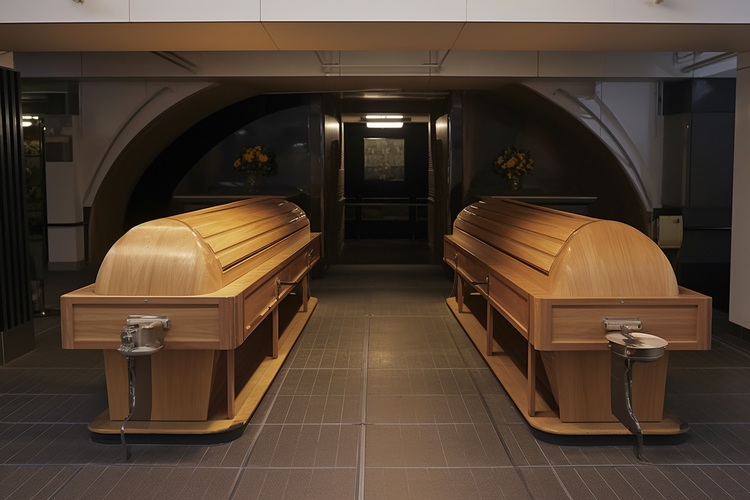Complete Cremation Services Guide: Options & Costs
Cremation is an increasingly chosen approach for end-of-life arrangements. This guide explains the cremation process, service options, memorial ideas, environmental impacts, religious considerations, and typical costs to help families make informed choices about cremation services and memorialization.

Cremation reduces human remains to bone fragments through intense heat, producing the familiar ashes families receive. The body is placed in a combustible container and introduced into a cremation chamber where temperatures commonly range from 1,400 to 1,800 degrees Fahrenheit. Over roughly two to three hours the organic material is consumed; the remaining bone fragments are allowed to cool and then mechanically processed into a fine, sand-like consistency that is returned to the family as cremated remains.
Types of cremation services
Cremation can be arranged in several different ways depending on budget, cultural preferences, and the desire for a ceremony:
-
Direct cremation: The simplest and usually least expensive option. The body is cremated soon after death without a prior viewing, visitation, or formal service with the remains present. Families can hold a separate memorial later if they wish.
-
Memorial service after cremation: The deceased is cremated first, and a commemorative service is planned later. This approach offers scheduling flexibility and can reduce immediate costs while still providing an opportunity for family and friends to gather.
-
Funeral service followed by cremation: A traditional funeral or visitation with the body present is held before the cremation occurs. This option preserves the ritual elements of a conventional funeral while still resulting in cremated remains.
Each option can be adapted to incorporate religious rites, cultural customs, or personal preferences. Funeral homes and crematoriums can advise on logistics and local regulations that might affect one choice over another.
Memorializing after cremation
Families have many ways to honor a loved one after cremation. Popular choices include:
-
Keeping the ashes in an urn: Urns are available in metal, ceramic, wood, biodegradable materials, and a wide range of designs to suit personal taste.
-
Scattering the ashes: Many people scatter remains in a place that had personal meaning to the deceased, such as a shoreline, park, or family property. Be aware of local laws and property permissions.
-
Burial of the urn: Urns can be interred in cemetery plots or placed in columbarium niches, offering a permanent, physical location for visitation.
-
Memorial jewelry: Small amounts of ashes can be sealed into pendants, rings, or other keepsakes so family members can carry a part of their loved one.
-
Ashes incorporated into art: Some services incorporate ashes into glass, paintings, or sculptural pieces that transform remains into lasting art.
-
Living memorials: Biodegradable urns designed to support tree or plant growth allow ashes to contribute to a living memorial such as a tree planting.
Environmental considerations
Cremation is often perceived as more eco-friendly than traditional burial, largely because it avoids land usage and some resource costs associated with caskets and grave plots. However, cremation consumes significant energy and emits carbon dioxide and trace pollutants. Many crematoria now use emission control technology to reduce particulates and gases. Alternative techniques are also emerging: alkaline hydrolysis, sometimes called water cremation or aquamation, uses water and alkaline chemicals to accelerate decomposition and typically produces fewer airborne emissions. Other innovations and stricter regulations aim to minimize environmental impacts, so those concerned with sustainability should ask providers about emissions controls and alternative options.
Religious and cultural perspectives
Religious beliefs play a major role in decisions about cremation. Acceptance varies by faith and denomination:
-
Christianity: Many Christian groups accept cremation, though some branches or congregations prefer burial. Practices vary by denomination and local clergy guidance.
-
Judaism: Orthodox Judaism generally forbids cremation, while Conservative and Reform branches may be more permissive depending on family preference and community norms.
-
Islam: Most Islamic traditions prohibit cremation and favor burial performed according to religious rites.
-
Hinduism and Buddhism: Both religions have longstanding traditions of cremation, often viewing the practice as part of spiritual transition.
Families should consult spiritual leaders and community traditions when planning final arrangements to ensure respect for beliefs and customs.
| Service Type | Average Cost Range |
|---|---|
| Direct Cremation | $1,000 - $3,000 |
| Cremation with Memorial Service | $2,000 - $5,000 |
| Full Funeral Service with Cremation | $4,000 - $8,000 |
Prices and cost ranges are estimates and may change over time. Independent research is advised before making financial arrangements.
Costs, paperwork, and practical matters
Cremation typically costs less than a full burial when factoring in casket prices, cemetery plots, and headstones. Fees often cover the cremation itself, basic containers or urns, and required permits, but additional expenses can include transportation, death certificates, obituary notices, specialized urns, memorial services, and cemetery or columbarium fees. Ask providers for a detailed itemized estimate and verify what is included.
Families should also be aware of legal and administrative steps such as obtaining multiple copies of death certificates, completing authorization forms, and checking local regulations about scattering or interring ashes.
Making the right choice
Choosing cremation is a personal decision influenced by finances, environmental concerns, religious beliefs, and the desire for particular memorial practices. Discuss options with family members, consult spiritual advisors if appropriate, and meet with funeral directors to compare services and confirm legal requirements. Thoughtful planning can help ensure the final arrangements reflect the wishes of the deceased and provide meaningful closure for loved ones.
Cremation offers flexibility in how people remember and honor those who have passed. By understanding the process, service types, memorial options, environmental impacts, and typical costs, families can make informed decisions that best suit their values and circumstances.





